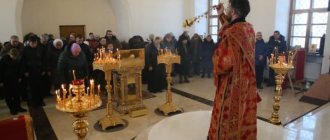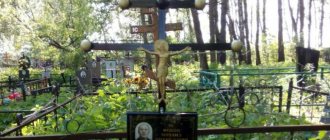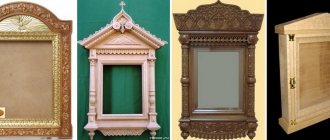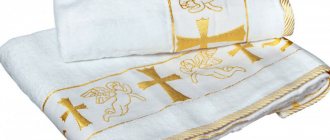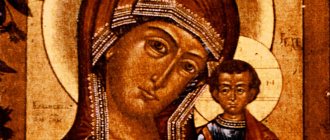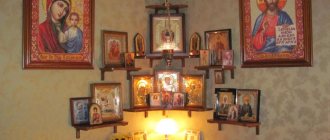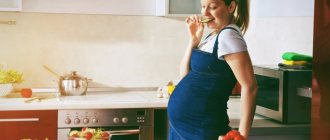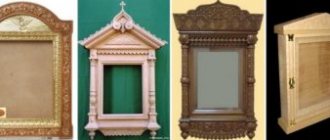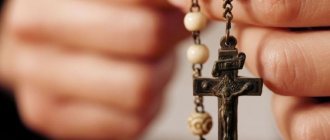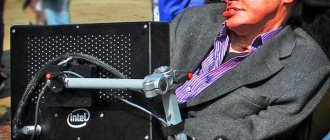Is it possible to make shelves for icons yourself? What materials are better to choose? Let's try to figure this issue out together. Slavic Orthodox traditions allow the use of icons to decorate living spaces. This tradition testifies to people’s desire for religion and respect for church rituals and traditions.
As a home iconostasis for placing icons, you can consider a corner shelf for icons, as well as various church items. The canons of Orthodoxy suggest the installation of the main icons in the corner or on the eastern wall of the room.
Attention! In addition to Orthodox items, shelves for icons should not be loaded with other items.
Let's try to figure out how to make corner shelves for icons.
Making a shelf
If you do not have the opportunity to purchase a stand for images, or all the models that you have come across did not appeal to you or are not suitable (for example, a small number of tiers, limited space, etc.), then do-it-yourself homemade iconostasis, photos of which are presented in the article , you can make it yourself. For a standard three-tier iconostasis you will need wooden boards, a drill and screws. In order to assemble it, you need to create drawings of a home iconostasis. Using them, you can easily calculate the dimensions of the wooden panels, which will depend on the number of icons located on the iconostasis.
Making a hanging shelf
Functionally, this version is not suitable for installing a TV, as it requires the use of additional elements.
But for a specific design solution, this idea may seem interesting. All work can be divided into several stages:
- Holes were drilled in the ceiling, plastic spacers were inserted and special hooks were screwed on. A shelf hangs from it, which can be reinforced from below with a strip of wear-resistant material.
- The TV should be installed so that the center of gravity is exactly in the middle of the shelf.
- Now you need to install an additional mount to protect the device from falling. It can be located on the back of the TV or in the middle (usually included in the package).
Stand for holy images made of plywood
Shelf parameters and design may vary. It is important that the icons you need are placed there. This plywood shelf will be made with dimensions of 30x35x4 cm. What you will need for this:
- Pine board measuring 1.5-2.0 cm thick and 15 cm wide.
- Prepared glued board to form the bottom of the cabinet, 1.5 cm thick and 21 cm wide.
- Small pieces of fiberboard and birch plywood for sketching.
- Sandpaper.
- Self-tapping screws.
- A jigsaw is best if it is electric.
- Drill and drill bits.
- Milling table.
- Lathe.
- Pencil and meter ruler.
First, we draw and prepare future templates from fiberboard. This is done simply:
- We make a drawing on the fiberboard in natural volume and cut them out using a jigsaw.
- Next, we sand it with sandpaper to the parameters we need.
- We delimit the places for screws on the templates.
- We take the prepared blanks, transfer them to plywood and cut them out using a jigsaw and grind off the irregularities.
- The result should be: side, side and bottom.
- Now mark the holes with a pencil. There should be 2 of them on the bottom, 3 on the side, 4 on the side. We drill out the marked places and get holes for connecting the template to the workpiece.
The last step is to attach the template to the workpiece using self-tapping screws.
The sides and sides are cut down in the same way, and 6 holes are marked: 2 on the bottom, 2 for the side, 2 for the side.
Now using the machine we make 2 identical parts.
History of the red corner
Every person has heard the phrase “red corner” or “God’s place”. However, not everyone knows why this place received such a name and how correctly it was located. You can often hear the answer that this is the right corner from the door. But it is not always the case.
Ethnographers claim that in past times, “God’s place” was located diagonally from the stove.
And this was done for a reason. The word red was associated with spring, summer and warmth, so they tried to place icons more on the south or east side.
The north and west for the ancient Slavs were comparable to death, evil spirits and severe winter. A little later, these stereotypes diverged, and people began to simply create cozy corners with numerous icons.
How to make a simple wooden shelf?
If you add different numbers of modules you need to the base, you can easily give it a completely new look
Please note that you need to look at the condition of your materials - they should not be crooked, cracked or covered with fungus. And if everything is ready, you can start creating a shelf.. Step one
Marking. For example, let's take a rectangular shape. We take a pre-prepared drawing of the structure and transfer the measurements to the boards. When we have completed this stage of work, we proceed to the next one.
Step one. Marking. For example, let's take a rectangular shape. We take a pre-prepared drawing of the structure and transfer the measurements to the boards. When we have completed this stage of work, we proceed to the next one.
Step two. Sawing. A jigsaw is best suited for this, but other tools are not excluded. Make sure that the cuts correspond to the markings. The result should be two short and two long boards.
Step four. Assembly. Place the bottom horizontally. Mark eight millimeters from the edges and then draw lines
Please note that they must be parallel to the cuts.
Next, on the drawn strips we mark the places where the holes for the screws will be made. Same with the top. After this, side boards secured with self-tapping screws are attached to the lower part of the product. Place the top board on top and secure it.
This is the simplest version of a wooden wall shelf that you can make. And you can build on it when constructing new products.
Design options
Orthodox canons suggest placing icons on the eastern wall. As an option, the place of the iconostasis is arranged in a corner directed to the east. Depending on the selected area, the shelf can be straight or angular. The small size of the corner shelf requires a multi-tier structure. The shelf can be equipped with a rear wall. Often it is decorated with carvings depicting birds, vegetation or the outlines of the holy apostles. The traditions of Orthodoxy do not provide for the placement of items not related to religion next to church paraphernalia. Having decided on the shape of the shelf, we move on to preparing the material and tools.
Where to place the iconostasis
A home deity is a temple that is always next to a believer. The foundations of the temple are transferred to a small home chapel, and the first church law is that icons should be located on the eastern side of the apartment.
How to determine where east is? There are three ways to get your bearings:
- In the morning, go out onto the balcony and see from which side the sun rises.
- In the evening, find the North Star in the sky - it always points to the north, which means the east will be on the right.
- On the compass, align the arrows with north and south, east will be on the right side.
Firing a sauna with pellets: are there any advantages and can a conventional stove be used for this?
After determining the east side, you need to choose a wall or corner near the window so that natural sunlight illuminates the images.
The icon rack can be placed in any room, except for the room close to the toilet and bathroom. The kitchen is suitable for icons of Christ the Savior: he sanctifies food and protects the household. And after eating, it is advisable to thank the intercessor every time for “...our daily bread...”.
Note to believers! The holy elders do not recommend placing the iconostasis in a room where guests gather and drink alcohol. There should be no posters of stars or large photographs on the walls. The place for prayer is chosen to be spacious, bright, secluded and, most importantly, free from objects reminiscent of human sins.
DIY home iconostasis drawings photo
Home iconostasis made of natural wood with carved patterns The tradition of arranging a home iconostasis has existed for more than one century.
Although in modern homes icons are often placed on bookcase shelves or hung on the wall, it is best to set up a separate special place for them. Single-tier straight rack - shelf for icons
A good option would be a hanging shelf, which according to the canon should be placed on the eastern wall of the house. Often such a shelf is made corner, two or three tiers high.
Beautiful wooden shelf for icons in the corner of the room in three tiers
Corner shelf for icons with candlestick
Varieties
Shelf for icons “Home mini-iconostasis corner”
In workshops you can order a stand for home icons of any size and configuration, but this is quite an expensive job.
Corner shelf made of fiberboard, made in three tiers
An easier option is to use a regular corner shelf from a hardware store, but this may cause sizing issues. In addition, you will have to look for a model that will “fit” better into the interior. All these difficulties can be avoided if you make a shelf for icons yourself - this is quite feasible even with little experience in carpentry.
Wall-mounted corner shelf for wooden icons
A do-it-yourself icon shelf can have any convenient design. Corner shelves are made single-level or in several tiers. To connect several levels, supports carved from wood are usually used. The finished shelf is often decorated with carvings, openwork overlays, and covered with special carpentry varnish and wax.
Small corner shelf for icons, two tiers. Do-it-yourself home iconostasis
Homemade shelf for icons
By putting love, soul, and heart into the process of creating an iconostasis, you can create not only something useful to use, but also a real design masterpiece. There are many options for making such shelves. But there are certain requirements for them.
Using modern materials and wood, you can make a corner shelf to suit every taste.
Thus, the frames of the images should not overlap. No foreign objects can lie next to them, only things that directly belong to the shrine.
Making a corner shelf
The simplest and most reliable system that does not require large investments. An ideal “budget” option, it can be used both for installing a TV (for example, in the kitchen) and for other household purposes.
No special fastening is required, just two aluminum corners, a few dowels and self-tapping screws are enough. The most important thing is accurate calculation and, of course, the golden hands of the master.
- First, drill holes in the corners, preferably in the middle, to make installation easier.
- Now you need to mount the product and attach the sticker to the wall.
- After completion of the work, the entire structure is securely fastened and ready for use.
There are many products available at retail that can help create a standard interior design that is affordable for many of us. But with imagination and skills in working with construction tools, you can create something unusual and original.
You can see how you can build a simple corner shelf under the TV with your own hands in the video:
Where and how to make a home iconostasis
According to church traditions, the iconostasis is placed on the east side, so first in an apartment or house you need to find a corner exactly looking east. If it is not possible to use the desired angle, then you need to find one close to it.
Since not everyone manages to adhere to these conditions, they were made optional. Usually the iconostasis is placed in a large spacious room so that at least 2 people can fit there. You cannot have a TV or computer nearby.
How to make a corner shelf?
The priests say that the temple should always be open so that everyone who needs it can come to it. The houses of believers are small temples in which there are many shrines, and they occupy a place of honor in the house.
Recommendation! Let your skills and the interior of the room help you choose the material and shape for the future shelf.
You can make a shelf out of it:
- Plywood;
- Tree;
- Plastic;
- Metal.
Character shelves can be single-level or multi-level. Icons for iconostases can be mounted on the wall or placed on shelves. Let's consider the option of producing a wooden shelf, since this material is alive and has a certain strength in itself.
Create your own red corner
What the home iconostasis will be like depends only on the owners of the house. However, remember to follow the following rules:
- Holy images must be installed far from technology (TV, computer, etc.) - the farther from everything worldly, the better.
- There should be enough space in front of the icons so that those praying do not feel crowded. And during prayer, it is better to place church books (prayer books, the Gospel) on a folding lectern (stand).
- You should not place icons individually on bookshelves, in cabinets, while crowding these images with other worldly objects: souvenirs, pictures, etc. This is strictly prohibited, since by doing so we show disrespect for God. After all, for some reason, many people put photographs of people we love and care about, especially those who have left this world, in the most prominent place, without cluttering them with unnecessary objects. The same should be done with icons, showing love and respect for holy images.
Corner floor-standing bookshelf (cabinet)
(with your own hands in 2 hours!!! drawings and step-by-step photos of production)
The author claims that he managed to make all the parts of the shelf and assemble the entire structure in 2 hours. The rest of the time was spent on painting, varnishing and drying.
The very design of such a shelf suggests that not a single nail will be needed to make it.
It is important that all the shelves sit very tightly in their places so that the shelf does not wobble. If the connecting holes are unsuccessful and some shelves wobble in their places, then the shelves in these places can be screwed or, as the author advises, simply drive pieces and splinters of wood into the grooves
We also recommend that you remember to screw the shelf to the wall so that it does not accidentally fall)))
Manufacturing stages
Carved corner shelf for handmade icons with a drawing Before starting work, you should make a drawing of the project.
The size and number of shelves depend on the type of icons that will be placed on the finished home iconostasis. To make a simple two-tier shelf, you will need two 1.5 cm thick pine boards, as well as four supports. We cut out three parts using a jigsaw according to the template - sidewall, side and bottom
The workpiece is milled using a stencil using special equipment
To turn decorative parts you will need a lathe or take them ready-made
We assemble the shelf - the bottoms are screwed to the turned elements using self-tapping screws
When connecting the sidewalls to the bottoms, the screws should hit the middle of the ends of the bottoms
The sides are screwed on using cylinders - self-tapping screws are inserted into the holes from the bottom, the cylinders are put on, the hardware is screwed into the side
The final stage is coating the finished product with drying oil and attaching it to brackets in the corner
After completion of the work, the finished shelf is treated with stain and varnish. Both colorless varnishes and those that give the board the color of different types of wood are suitable. When choosing a quick-drying varnish, the product is ready for use in a few hours.
Small shelves for icons of different colors - pine, walnut, mahogany
The procedure for making a shelf for icons
On a board, the thickness of which is fifteen millimeters, the outlines, as well as the main contours of the parts, are transferred from a paper sketch to the main board. Next, use an electric jigsaw to cut out the crucifix. Using cutters you need to make convex parts. The carving must be done in layers, carefully highlighting the internal parts with a thin cutter. Once the procedure for cutting the crucifix is completed, you can begin sanding the product, armed with fine sandpaper.
Advice! If you have to cut out bas-reliefs in segments, it is better to secure them with a sheet of plywood on the back side.
Then the decorative parts are glued together and attached to the sheet of the slab. To remove all excess, you can use a jigsaw or an electric cutter.
Using sandpaper, it is necessary to carry out high-quality sanding of the side of the finished product.
To make beautiful crossbars you will need certain professional skills, as well as certain equipment. After the balusters are made, it is important to carry out high-quality sanding of the product.
For a shelf for icons you will need several parts:
- side panels;
- vertical racks;
- sides;
- shelves
Shelf templates for icons can be made from pieces of wood board.
Attention! Professionals do not recommend using plywood for templates, since after cutting it needs to be significantly modified.
You will need two side panels for the shelf, and you also need to take care of purchasing high-quality fasteners.
Sequencing
First you need to attach the ready-made templates to the board. Next, the part is formed using an electric jigsaw. The edges are processed using a milling cutter; all irregularities and roughness present on the surface are sanded with abrasive paper. Before making holes, you need to mark them with a pencil. Next, the side panels are prepared using the same algorithm. After assembling the product, it is advisable to varnish the shelf.
Wall fixation
To attach a corner shelf under icons on the wall, you will need dowels. First you need to attach hanging loops to the finished product. Next, the shelf is applied to the wall, and the places where the dowels will be located are marked. The holes for them are made with an electric drill.
There are certain requirements that must be met in order for the finished shelf for icons to be beautifully mounted on the wall:
- the product should hang at the level of human eyes or higher;
- there should be no other decorative elements next to the icons;
- if there will be functional lamps on the shelf, it is important to ensure fire safety (there should be no flammable materials near the shelf)
Decoration features
Basically, natural wood is used in the manufacture of shelves for icons. If you can’t make carved strips and parts with your own hands, you can limit yourself to creating an imitation of it. To obtain a similar effect, you can first burn out the design, then cover the finished fragments with decorative enamel. To do this, the contour of the ornament is transferred to the top panel or side, and all contours are outlined using burning devices.
Attention! The finished pattern must be uniform over the entire surface of the product, otherwise the shelf will have an unaesthetic appearance.
As soon as the contour application is completed, enamel is applied to the surface with a thin brush, then the product is coated with colorless varnish.
The difference between icons and paintings
It is important to note that if there are some picturesque paintings in the house that depict various biblical scenes, they should under no circumstances be installed near the home iconostasis. Since it is known that with the help of holy images and icons, Orthodox believers communicate with all the saints and the Almighty, but there is no connection between the icon and the picture.
In this case, it is important to know that the home iconostasis is a holy place, a kind of small temple in your apartment and it is intended to offer prayers and thank the Almighty for help. Therefore, installing reproductions of various paintings depicting biblical scenes is inappropriate.
In your own apartment, you cannot place the Sacred Face close to posters or paintings depicting certain famous people. Because, in this way, Orthodox Christian believers insult the shrine, placing them, in some way, on a par between worldly idols and the Almighty.
It is known that the eastern part of an apartment or house is of particular importance for the Orthodox religion, therefore it is necessary to place home iconostases or create a red corner on the eastern side.
The eastern part has a definite place in all historical religious information, which is why the Old Testament speaks of the creation of paradise in the eastern part of Eden. The Gospel Scriptures say that lightning came from the east, and the Almighty also comes from heaven to earth from there. Every Orthodox parishioner knows that in a church the church altar is located on the east side.
Icons for home iconostasis
The Orthodox Church attaches great importance to a “beautiful corner.” She says that a person has the right to pray not only in the temple, but to honor the Lord at home. A properly constructed chapel should contain the following images:
Some lay believers place the face of the Guide in the “red corner”. The Vladimir and Kazan images of the Mother of God are also allowed. At the same time, you need to turn to shrines not only for help. We should not forget to express gratitude for their support.
How to arrange a home iconostasis
Publication date: August 23, 2016
The temple is a house of prayer and a place for performing the sacraments. A home is a family hearth, but in the home of a believer there should be prayer, because the home of an Orthodox Christian is a small Church. And we pray in front of icons, and there must be icons in the house. In sufficient quantity, but within reasonable limits.
An Orthodox Christian living in a modern home often has questions: what icons should be in the house and how to place them correctly?
Required materials and tools
To make a corner shelf, wood of various decorative species is used - for example, oak or cherry. A less expensive material would be pine board. In addition to wood, you can also use plywood or chipboard. The thickness of the board can vary from 1.5cm to 2.5cm. You will also need boards of small width in order to carve the supports.
To work you will need the following tools:
- tape measure or ruler;
- hacksaw;
- sandpaper for wood;
- electric jigsaw;
- electric drill;
- self-tapping screws;
- wood glue;
- wood varnish.
Required Tools
To attach the finished shelf to the wall, you will also need masonry drills, metal corners or hinges, and self-tapping screws with dowels.
Manufacturing of parts
The shelf design includes several parts. Most often, the stand is made from the following parts:
- racks;
- side panels;
- shelves;
- legs (if the shelf is not wall-mounted);
- sides.
There are quite a large number of shelves with complex designs. The choice of the size of each part depends on the number of icons, the location of the shelf itself and the shape of the parts.
Straight single-tier shelving
- Before manufacturing, it is necessary to think through all the nuances, prepare materials and prepare a drawing of all the details. Once the drawing is drawn, it can be transferred to MDF or chipboard, and templates can be cut out of them.
- The templates need to be transferred to the material from which all the parts will be made (oak boards or any other). You should cut out carefully to avoid damaging the template and the future part. For this it is better to use an electric jigsaw.
- After cutting out the parts, their edges are rubbed with sandpaper and smoothed over with a milling cutter.
- To connect each part, you can use the mosaic connection method. First of all, holes are cut out in a pre-prepared place on the side panel - nests for the shelf platform. At the platform, rods for insertion are cut out. Fastening occurs by connecting the platform rods with the holes in the side panels. For higher strength, use glue for fastening. The second method of fastening is screwing in screws. To do this, platforms (if there are several of them) are installed below and in the middle (or to choose from). Holes are drilled through the sides of the panels, after which screws are screwed in. To make the screws invisible, plugs are attached to them.
- After connecting all the parts, metal loops are attached to the upper edges of the panel.
- Holes are drilled in the wall for the mounting bolts on which the shelf will be hung. It is necessary to take into account the weight of the shelf with icons so that the dowels do not break off at any moment.
- After fastening is completed, the product is treated with protective agents - varnish and/or stain. Colors are chosen in accordance with the interior or at your discretion.
Corner shelf
Most often, corner shelves are planned on 2 or 3 tiers. The basis for this manufacturing option will be fiberboard material. To make a stand you need:
- A right triangle is drawn on a sheet of fiberboard using a pencil or marker. To make calculations easier, you can take sizes 280/280/380.
- The drawn figure is cut out with a wood saw or an electric jigsaw.
- After cutting, all parts are sanded with sandpaper.
- Having made all the parts smooth, they need to be connected to each other. This can be done using screws or wood glue.
- To prevent deterioration in quality and dampness, the entire structure must be varnished. Decorative patterns are cut out before varnishing.
- Metal loops are attached to the upper corners of the walls.
- In the corner part at a given level, holes are drilled in the wall for attaching hinges.
- The corner shelf is attached to a dowel, having previously calculated the maximum weight in order to avoid falling off the hinges.
What else was placed on the shelf for images?
It is worth recalling that iconostases in Ancient Russia contained not only holy water , various icons, but also prosphora. Also, residents of certain houses hid the Bible, Gospels and memorials in the red corner . The memorials were a kind of book in which the names of all family members were recorded, as well as all those who were living and those who had already died. Women of Ancient Rus' created some kind of doves from scrap materials as symbols of the Holy Spirit in order to later hang them near the home iconostasis. During the home service, lighted candles and lamps were placed in the red corner, which was an integral attribute during the Ascension of prayers.
Historians from around the world claim that home iconostases existed in every Orthodox home before the 1917 revolution. After the Bolsheviks came to power, Orthodox believers continued to pray, but they did this in secret from the government. Therefore, after a while, only a few icons remained from the huge, decorated home red corners, which believers hid from other people, fearing various persecutions, repressions and other gossip. If you turn to a modern Orthodox believer, you can find many different differences between the modern iconostasis and the red corner of antiquity. Since until now, historians have not established exactly what the iconostasis looked like, and what, in addition to holy images, books and lamps, was located in it.
How to make a home iconostasis with your own hands
Before making a home iconostasis in an apartment or house, it is recommended to first study the recommendations for its construction, then select the desired corner in the house. And only then consider all possible options for making an iconostasis with your own hands.
Of course, it cannot be mentioned that modern furniture stores, taking into account the needs of customers, also offer, albeit a small, but quite good selection of such corners. But most families want to make it individual and unique. By the way, special wall cabinets for icons do not have to be corner. It all depends on the location you choose.
The best article for you, go to: Easter is the holiday of the Holy Resurrection of Christ
There is also the option of making a special custom cabinet. In this case, all features and wishes will be taken into account. In this version, it can be folded from several colors or have a carving.
- To independently make a special corner for icons, you can use absolutely any materials.
- The main thing is to first make drawings of the cabinet that you want to place in your home for this purpose.
- And don’t forget about sufficient distance between the shelves. Since when candles are burning, they can heat up and ignite.
- As for the height of placement, there is no special technology or recommendations. Just remember that the horses should be at eye level, not higher or lower.
- If you have made shelves for icons, then it would be reasonable to place a table under it. It will be possible to light both candles and lamps on it.
- You can also place holy scriptures, holy water, etc. on it.
DIY shelves, varieties of designs and interesting ideas for use 115 photos
Light, neat, interesting wall shelves, which are an excellent alternative to bulky cabinet furniture, will be an excellent decoration for any interior. Assembled from specially purchased ready-made blocks, or made from scrap materials available in every home, these products will bring comfort and originality to any room.
Beautiful shelves will find their application in any room of the apartment, be it the kitchen, living room, bedroom, hallway or bathroom. With their help, the room will look more lived-in, interesting, and there will be additional space for storing any useful items.
A shelf for heavy objects, for example, books, an aquarium, collectible dishes, potted plants, should be as reliable as possible, made of solid materials.
Therefore, before starting the process of designing a shelf, be sure to consider the following details:
- full load on the structure;
- fastening method;
- compliance of the materials used with the purpose of the room in which installation is planned;
- product style and design;
- functional.
When wondering how to make a wall shelf with your own hands, first decide which type of future design will be more suitable for the chosen room and will fully correspond to the assigned functions and your preferences.
Based on design features, shelves are:
- closing and fully open;
- linear and L-shaped;
- with or without side fencing elements;
- through, or with a rear limiter;
- single-tier or having several levels;
- round and rectangular;
- unusual shape, steeply inclined, diamond-shaped;
- limited on all sides or consisting of one base, etc.
If you pay attention to the materials used for manufacturing, then wall shelves can be:
- glass;
- with mirror surface elements;
- wooden;
- made of MDF, chipboard, plywood;
- polymer and plastic;
- combined - using several types of raw materials.
Think about which materials will be most preferable for constructing a shelf yourself, more wear-resistant and reliable, and choose an option that suits you with all its characteristics.
After studying numerous photos of shelves made by yourself, you can choose the option that best suits your taste and take it as a sample, try to make the most similar design, adapted specifically to your apartment.
It is best to adhere to the following algorithm of actions:
Draw a rough sketch on paper, indicating the planned dimensions of the shelf, or even better, a full-fledged sketch of how the future shelf will look on the wall, indicating its dimensions.
Decide on the type of fastening, whether it will be construction dowels, anchors, brackets that can withstand heavy loads, or whether the shelf will be attached to a flexible base, for example, flagella, braided ropes, belts - these fasteners are only suitable for lightweight ones used primarily as a decorative element , shelves
Cut the materials to the required sizes, or, if using store-bought blanks, prepare them for assembly. Proceed with the immediate assembly of all parts and components, attach brackets, hinges or other prepared fasteners to the shelf.
Make horizontal markings on the wall surface to ensure even mounting to the wall. Attach the finished structure to the place allocated to it, check the strength of the structure.
The process of making a shelf with your own hands has come to an end, now all you have to do is display your favorite collection on it, lay out a set of books or any other items for which the shelf was intended.
Shelf with straps - to assemble it you will need two flat boards and two strong leather straps.
An invisible bookshelf - you will need several steel brackets on which the books are placed. Looking at this design, it seems that the books are simply floating in the air.
A wall shelf made of water pipes will be an excellent decoration for interiors of special styles.
Floor shelf made using glass bottles and base boards.
There are a huge number of variations in the design of wall shelves, because such a piece of furniture can be made from almost any material at hand. Turn on your imagination and begin the creative process of creating an unusual, aesthetic and functional piece of furniture.
What icons are needed?
Worshipers claim
that every Christian should have a home iconostasis or Red Corner in his home. It should contain the following images:
- icon of Jesus Christ;
Holy Face of the Mother of God;
image of St. Nicholas the Wonderworker;
the icon of the Almighty, which is considered most suitable for the Ascension of various prayers at home. It is worth noting that in this case, the temple ministers recommend that parishioners purchase a waist-length image of the Almighty.
Often, Orthodox believers choose to create an iconostasis in their own home, the Holy image of the Mother of God, which is called Tenderness or Guide. Some parishioners in the Orthodox Church choose the Vladimir icon of the Mother of God. There is no doubt that one of the Kazan icons, that is, the Help of Sinners or the Quick to Hear, should exist in the home iconostasis. Having installed holy images in the house, a person can not only ask them for help, but also thank them with their help.
How to arrange icons
A standard iconostasis should consist of 5 rows and the icons should be arranged in a certain order:
- A cross must be placed at the head of all icons.
- In the center is an icon of Jesus Christ. The faces of the Holy Trinity are placed a little lower.
- To the right of the icon of Christ is the Mother of God. And only then can you place other saints at the request.
It’s best when the red corner consists of icons that are similar in style. But this is difficult to do, because usually the icons are either donated or the required design was not found. But this does not play a big role; the most important thing is to create a holy place with faith and love in the heart.
